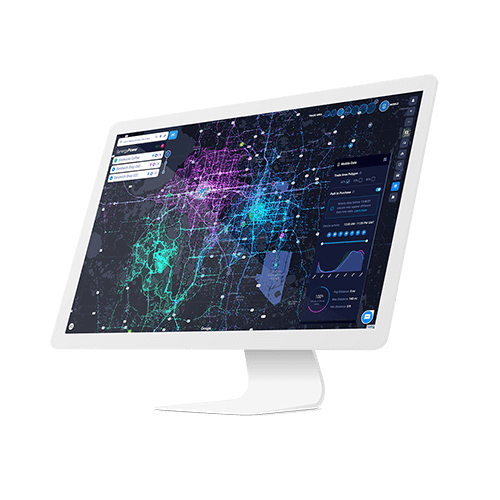Embracing A.I. means letting go of “Old School” methods
There is no question that tech has come a long, long way over the past 25 years. Computers, the Internet and smart phones have dramatically changed the landscape. Ironically, the way people accept, embrace and adopt technologies seems to have changed very little. There are those early adopters and first movers, and then there are those that let fear and doubt slow their decisions.

Today, businesses take tech such as computer automation and cloud-based computing for granted. And it is automation and a shift to cloud-computing that have helped pave the way for the latest innovations in A.I., machine learning and much more powerful location intelligence tools.
Data centers first started trying to automate their processes in the early 2000s. Back in the “old days” there was a person sitting in front of a computer that would watch for error messages. When one popped up on the screen, he or she would look up the error message in a manual and enter the necessary commands to fix the problem. The first step in automation was taking that book and automating the scripts as the error messages came up.

At the time, automating processes was incredibly important, because taking time to manually respond to error messages often meant downtime or even a crash for a system or website. The automation ensured that service would be maintained, even as systems and sites had to manage increasing loads and traffic.
Real estate has been notoriously slow to embrace new technology. But tech has been a game changer in bringing efficiencies to areas such as lease administration and lease accounting. Initially, company accounting systems were held behind firewalls. The mentality was that this was highly sensitive, mission critical data that needed to be safely guarded. One of the early tech-enabled lease administration firms created a Henry Ford type of process to streamline lease abstracts. But offering that assembly-line service to companies involved a subscription, which brought sensitive information from behind the firewall and put it in the cloud. At the time, that was a big, scary step for industry veterans who were averse to change.
A.I. Powered Innovation
The idea of automating processes that were manual, time-consuming and laborious was a pre-cursor to A.I. – the latest tech disruptor that has the potential to drive huge efficiencies across a variety of industries, including location intelligence.
These days, A.I. has moved to the forefront of everyone’s mindset, it’s just a matter of how to execute it. The old school method of building sales forecasting models relied on taking data in a very manual, painful process and creating different algorithms based on market segmenting and customer data. It was not a repeatable process. Models had to be created from scratch every time, which meant a more expensive and time-consuming process.
A.I. represents an important evolution by bringing in speed, efficiency and transparency along with powerful analytics. However, one of the biggest stumbling blocks is getting people to change their mindset when it comes to embracing that new technology.
Accepting the Inevitable
There are always those people that are averse to technology. They don’t want to learn new systems or change the way they do things. Upton Sinclair once said, “It is difficult to get a man to understand something when his salary depends on his not understanding it.”
That saying is apt for the general evolution of technology in the workplace. People are often at odds with adapting these new things that create change, often driven by an irrational fear of what is to come. The two common fears that hold people back from embracing A.I and new technology are:
- Not understanding how the technology works. That fear is understandable. It is mind-boggling to see just how quickly these calculations can be made with thousands of different data points and different scenarios.
- Proprietary data is going to be shared or at risk for exposure.
Both of those fears are holding people back from embracing A.I. At SiteZeus, we’re talking with people who are using our solutions to run sales forecasting models every day. We get data from them at 8 p.m. one night and have an 84% accurate model by 3 p.m. the next day. Yet there is a fear that comes into it the same way the old real estate veteran didn’t understand how you could possibly run reports on your total span of rent obligations 25 years ago. There is a natural human fear of change, and a fear that you might not be relevant any longer.
Taking the Next Evolutionary Step
Oftentimes, people don’t want to make changes unless they are visionary, and the reality is that those visionaries are a small part of the population. Over time, people see the efficiencies in action and recognize that it does make sense to automate these processes.
It is especially hard for people who have been entrenched in their ways of doing things a certain way to understand that the shift to A.I. and machine learning is happening. But that shift is happening, and we will continue to head down that path, because it makes the most financial sense, not only from a cost perspective, but from an accuracy perspective.
By its nature, real estate has traditionally been an industry where strategic planning, analytics and research takes place behind closed doors. Retailers also have adopted that same mentality, carefully guarding proprietary data and the “secret sauce” that makes their business successful. Anyone looking for higher efficiencies with greater predictability is going to have to use the power of A.I. and predictive analytics in order to survive and thrive in an increasingly competitive, automated world.
Recommended Posts

